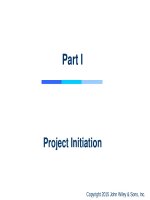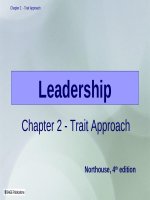Lecture Communication skill: Chapter 2 - Tracey Bretag, Joanna Crossman, Sarbari Bordia
Bạn đang xem bản rút gọn của tài liệu. Xem và tải ngay bản đầy đủ của tài liệu tại đây (227.76 KB, 23 trang )
����������������������������������������������������������������������������������������������������������������������������������������������������������������������������������������������������������������������������������������������������������������������������������������������������������������������������������������������������������������������������������������������������������������������������������������������������������������������������������������������������������������������������������������������������������������������������������������������������������������������������������������������������������������������������������������������������������������������������������������������������������������������������������������������������������������������������������������������������������������������������������������������������������������������������������������������������������������������������������������������������������������������������������������������������������������������������������������������������������������������������������������������������������������������������������������������������������������������������������������������������������������������������������������������������������������������������������������������������������������������������������������������������������������������������������������������������������������������������������������������������������������������������������������������������������������������������������������������������������������������������������������������������������������������������������������������������������������������������������������������������������������������������������������������������������������������������������������������������������������������������������������������������������������������������������������������������������������������������������������������������������������������������������������������������������������������������������������������������������������������������������������������������������������������������������������������������������������������������������������������������������������������������������������������������������������������������������������������������������������������������������������������������������������������������������������������������������������������������������������������������������������������������������������������������������������������������������������������������������������������������������������������������������������������������������������������������������������������������������������������������������������������������������������������������������������������������������������������������������������������������������������������������������������������������������������������������������������������������������������������������������������������������������������������������������������������������������������������������������������������������������������������������������������������������������������������������������������������������������������������������������������������������������������������������������������������������������������������������������������������������������������������������������������������������������������������������������������������������������������������������������������������������������������������������������������������������������������������������������������������������������������������������������������������������������������������������������������������������������������������������������������������������������������������������������������������������������������������������������������������������������������������������������������������������������������������������������������������������������������������������������������������������������������������������������������������������������������������������������������������������������������������������������������������������������������������������������������������������������������������������������������tag, Crossman and Bordia
11
2-11
Summarising (cont.)
• Five steps to summarising (Swales & Feak,
2005):
– Read text quickly to determine important
information.
– Read text in detail and note down main facts and
ideas.
– Write main points in your own words.
– Write important material in relation to the main
points.
– Re-draft summary, adding or deleting materials if
necessary.
Copyright 2009 McGraw-Hill Australia Pty Ltd
PPTs t/a Communication Skills, by Bretag, Crossman and Bordia
12
2-12
Paraphrasing
• Use for smaller units of information, such as
one or two sentences.
• Maintain the exact meaning and reference
the idea appropriately.
• See examples on next slide and also in
Chapter 4: Academic conventions,
pp. 74–76.
Copyright 2009 McGraw-Hill Australia Pty Ltd
PPTs t/a Communication Skills, by Bretag, Crossman and Bordia
13
2-13
Paraphrasing (cont.)
Example
Original text
‘To be effective, a brand identity needs to
resonate with customers, differentiate the
brand from competitors, and represent what
the organization can and will do over time’
(Aker & Joachimsthaler 2000,
p. 40).
Copyright 2009 McGraw-Hill Australia Pty Ltd
PPTs t/a Communication Skills, by Bretag, Crossman and Bordia
14
2-14
Paraphrasing (cont.)
Example (cont.)
Acceptable paraphrase
A brand that aims for a successful identity
must fulfil the following criteria: meet the
practical and emotional needs of its
customers, portray itself as being different
from other brands selling similar services or
products and provide a future vision of the
company. (Aker & Joachimsthaler, 2000)
• Longer, new structure, and synonyms used
where appropriate
Copyright 2009 McGraw-Hill Australia Pty Ltd
PPTs t/a Communication Skills, by Bretag, Crossman and Bordia
15
2-15
Paraphrasing (cont.)
Example (cont.)
Unacceptable paraphrase
An effective brand resonates with
customers, differs from competitors and
represents what the company will try to do
over time (Aker & Joachimsthaler, 2000).
• Most key words are unchanged and the
structure of the original has been kept.
Copyright 2009 McGraw-Hill Australia Pty Ltd
PPTs t/a Communication Skills, by Bretag, Crossman and Bordia
16
2-16
Six steps in paraphrasing
1. Read original passage and understand the
meaning fully (several readings).
2. Find synonyms for the information words.
3. Make notes from the original passage.
4. Write the paraphrase from your notes.
5. Check your paraphrase to see if all the
information from the original is included and
you are not plagiarising the passage.
6. Reference the source appropriately in-text
as well as in the reference list.
Copyright 2009 McGraw-Hill Australia Pty Ltd
PPTs t/a Communication Skills, by Bretag, Crossman and Bordia
17
2-17
Quoting from sources
• Use quotations only when the original words
add to your argument.
• Ask yourself:
–
–
–
–
Does the quotation support my argument?
Is it memorable?
Does it add the weight of an authority?
Is the quotation necessary because it provides
the specific details of a law or regulation?
Copyright 2009 McGraw-Hill Australia Pty Ltd
PPTs t/a Communication Skills, by Bretag, Crossman and Bordia
18
2-18
Quoting from sources
(cont.)
• Avoid writing an essay that is a collection of
patched-together quotes.
• Be careful not to insert a quote just because
you think it ‘looks good’.
• Show quotation marks and the full
reference, including the page number.
Copyright 2009 McGraw-Hill Australia Pty Ltd
PPTs t/a Communication Skills, by Bretag, Crossman and Bordia
19
2-19
Summary: Note-taking
• Helps students prioritise and remember
material.
• Uses shortened forms of words or phrases.
• Places details under subheadings.
• Can be done in any method the student is
comfortable with.
Copyright 2009 McGraw-Hill Australia Pty Ltd
PPTs t/a Communication Skills, by Bretag, Crossman and Bordia
20
2-20
Summary: Summarising
• Shorter version of the original.
• Three main components:
– equal coverage
– unbiased
– rewritten in your own words.
• Five steps:
–
–
–
–
–
skim reading
detailed reading
writing of main points
writing of essential elements of main points
redrafting.
Copyright 2009 McGraw-Hill Australia Pty Ltd
PPTs t/a Communication Skills, by Bretag, Crossman and Bordia
21
2-21
Summary: Paraphrasing
• Rephrases material without changing
meaning.
• Includes the same amount of information as
the original text.
• Six steps:
–
–
–
–
–
–
reading and understanding
finding synonyms for information words
making notes
writing a paraphrase
revising the paraphrase
referencing.
Copyright 2009 McGraw-Hill Australia Pty Ltd
PPTs t/a Communication Skills, by Bretag, Crossman and Bordia
22
2-22
Summary: Quoting
• Should be done only if it is memorable or the
paraphrase leads to loss of essence or
meaning.
• Includes the words, grammar and
punctuation of the original writing.
• Material that is added to or deleted from the
original text should be inserted in
parentheses.
Copyright 2009 McGraw-Hill Australia Pty Ltd
PPTs t/a Communication Skills, by Bretag, Crossman and Bordia
23
2-23









